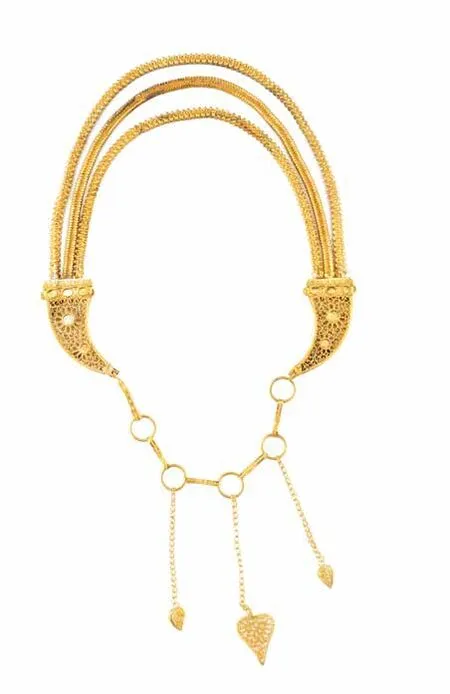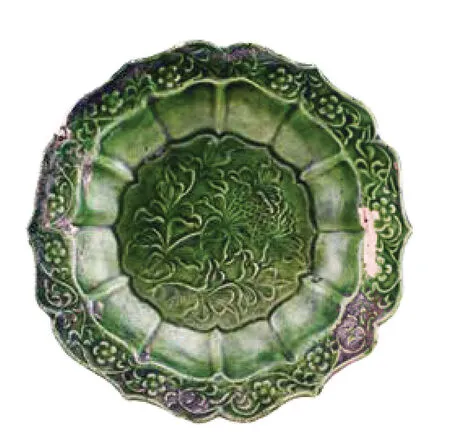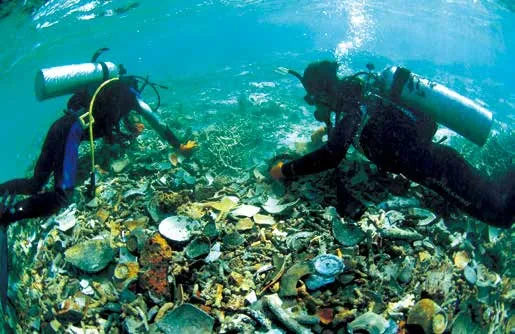Nanhai No.1:Leading China’s Underwater Archaeology
Text by Mo Qian
Photos courtesy of the Nanhai No.1 shipwreck archaeological team unless otherwise credited
The success of salvage created a new model and new field of underwater cultural heritage protection,which quickly played an exemplary role in the development of underwater archaeology in China and even the world.
D uring the Southern Song Dynasty (1127-1279),a merchant ship loaded with cargo slowly moved along China’s southeastern coast towards South Asia and West Asia and other regions to conduct trade activities.However,in the sea just off the coast of today’s Yangjiang City in southern China’s Guangdong Province,the ship suddenly sank and had remained underwater ever since.
About 800 years later,the shipwreck was found and excavated from the bottom of the sea.Yu Weichao,the father of China’s underwater archaeology,named it “Nanhai No.1”to capture his great hope for the future of China’s underwater archaeology.
The Nanhai No.1 shipwreck was found in 1987.Now,the excavation work has concluded,which recovered nearly 200,000 pieces (sets) of cultural relics.From the discovery of the shipwreck to the completion of the excavation,the archaeological project lasted more than three decades.To some extent,the shipwreck followed the development process of China’s underwater archaeology from birth to maturity.
Half Out of the Water
In the 1960s,the global advancement of science and technology drove a boom of various underwater activities.In these circumstances,underwater archaeology emerged.The boom attracted many people to look for ancient shipwrecks and potential treasures hidden deep in the water.
When the British searched the archives of the East India Company,they found that a ship named “Rheinberg” sank in Taishan and Yangjiang waters of China’s Guangdong Province.In 1987,a British maritime expedition and salvage company worked with the then Guangzhou Salvage Bureau and found more than 200 objects including a golden belt and some white-glazed porcelain wares from ancient kilns of Dehua County in southeastern China’s Fujian Province.

The basic outline of the Nanhai No.1 shipwreck and the cargo in each cabin at the end of 2015.Nearly 200,000 pieces (sets) of cultural relics were recovered in total.

A golden necklace recovered from the Nanhai No.1 shipwreck evidences the prosperous trade along the Maritime Silk Road in the Southern Song Dynasty (1127-1279).
1987
Waters off the coast of Yangjiang City,Guangdong Province
Southern Song Dynasty (1127-1279)
19.15 square meters
Rated among China’s top 10 new archaeological discoveries in 2019
Recognized as one of China’s top 100 archaeological discoveries in the past 100 years
“It was quite clear that the wrecked ship was not the Rheinberg,” said Sun Jian,director of the Institute of Underwater Archaeology of the Archaeological Research Center of China’s National Cultural Heritage Administration and team leader of the Nanhai No.1 protection and excavation project.“Because the Rheinberg was an 18th-century ship,it was loaded with tin ingots and silver to trade with China.But this one carried a lot of porcelain.”
Based on these findings,then the head of the Chinese team onboard stopped the salvage work,allowing China time to save the national-treasure-level shipwreck.
In 1987,the archaeological department of the China History Museum (today’s National Museum of China) launched an underwater archaeology research office.Although its first off-sea expedition yielded no big findings,it basically confirmed the existence of the sunken ship.
Due to limitations of economic strength and science and technological development level at that time,the salvage work of Nanhai No.1 was temporarily put on hold.
In April 2001,archaeological work on the Nanhai No.1 shipwreck resumed.Because the project had been suspended for years and lacked reference objects in the sea,it was very difficult to find the shipwreck again,said Sun Jian.“But when we lifted anchor to sail back,we found broken porcelain pieces stuck in fishing nets hanging from the bow of our boat,so we knew that the shipwreck site was right next to us,” he added.With the help of GPS,the site of the Nanhai No.1 was finally pinpointed in May 2001.
Salvaging the Whole Ship
At the time,archaeologists worked out two salvage plans.One was underwater excavation,which planned to take away the cargo and disassemble the hull to be reassembled on dry land.The other was to salvage the whole ship as a single piece.
Since the Nanhai No.1 was buried in the seabed silt with poor visibility and archaeologists couldn’t work for a long time under this circumstance,underwater excavation would be extremely difficult.And still packed with cargo,the ship frame was hardly strong enough to be lifted after soaking in the water so long.Considering the needs of archaeological research,cultural relic protection,and public sharing,Chinese archaeologists eventually decided to choose the whole salvage plan.
On December 22,2007,more than eight months after the launch of the salvage work and two decades after its discovery,the Nanhai No.1 was finally lifted out of water,with the help of the cranevessel “Huatianlong” with a lifting capacity of 4,000 tons.The found shipwreck was 22.15 meters long and 9.9 meters wide.

A green-glazed porcelain plate discovered from the Nanhai No.1 shipwreck.
The success created a new model and new field of underwater cultural heritage protection,which quickly played an exemplary role in the development of underwater archaeology in China and even the world.
A Cross-section of History
A total of nearly 200,000 pieces (sets) of cultural relics were found on the Nanhai No.1.“The hull of the ship was the biggest relic,” said Sun Jian.“Many of the so-called ‘ancient ships’ we have seen were mostly replicas based on documentary records or appearance in ancient paintings,which are not the same as engineering drawings after all.The hull of the Nanhai No.1 provided an excellent example for the study of ancient Chinese shipbuilding and maritime history.
“The Nanhai No.1 was a large ocean-going vessel,” continued Sun.“With a relatively short but wide hull,it belonged to the category of ‘Fujian ships’ especially built for ocean navigation in ancient China.The hull was mainly made of pine and fir wood.The Song Dynasty (960-1279) heralded a great navigation period in ancient China.At the time,most vessels for maritime transportation came from China.Many foreign envoys and merchants boarded Chinese ships,which were larger and safer.”

Chinese archaeological workers conducting underwater surveying of cultural relics in the South China Sea in 2007.(Photo by Guan Xiangdong/CNS)
Meanwhile,the cultural relics on the Nanhai No.1 provided clues to life in the Song Dynasty.The remains of geese,sheep,hens and other domestic animals indicated that without preservation equipment,the crew kept poultry and livestock on ship for food support.The rich and diverse remains of fruits and nuts such as plums,olives,betel nuts,and pine nuts found on the ship told stories of“a navigation history on the tip of the tongue.” A little rice and wax gourds were scattered on the deck,indicating that these two crops were widely planted at that time.And ink stones,seals,wooden combs,and Goddess of Mercy statues vividly hearkened to daily life onboard.
The vessel also provided strong evidence about the ancient Maritime Silk Road.The sinking place of the Nanhai No.1 was located at a critical point on the Maritime Silk Road.The discovery of a large amount of gold,silver,and copper coins evidenced a highly developed commodity economy of the Song Dynasty that was integrated into the world trading system.
Meanwhile,many objects excavated from the ship were not of traditional Chinese style.For example,many earrings and necklaces onboard were in the exotic styles of Southeast Asia and West Asia.And a greenish-glazed Dehua porcelain bottle with six arrises discovered aboard the ship was closely connected to Arabic style.
In 2016,silk protein was detected in a cabin of the Nanhai No.1.After it was immersed in seawater for 800 years,the silk fabrics have been rotting in the mud.Archaeologists found silk protein in mud samples,indicating the presence of former silk products onboard,though no tangible silk relics have been found.The discovery eliminated the confusion as to why silk relics have never been found along the Maritime Silk Road.With so many vessels sailing along the ancient Maritime Silk Road,of course plenty of silk had been transported to every corner of the world.
China Pictorial2022年7期
